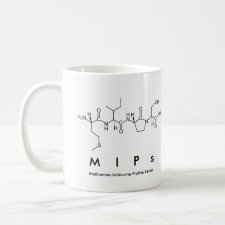
Authors: Yu SA, Luo AQ, Biswal D, Hilt JZ, Puleo DA
Article Title: Lysozyme-imprinted polymer synthesized using UV free-radical polymerization.
Publication date: 2010
Journal: Talanta
Volume: 83
Issue: (1)
Page numbers: 156-161.
DOI: 10.1016/j.talanta.2010.08.055
Alternative URL: http://www.sciencedirect.com/science/article/B6THP-50YF6DH-1/2/d6d92b99225d12036df9641c9720e427
Abstract: Molecular imprinting is a method to fabricate a polymeric material (molecularly imprinted polymer or MIP) capable of selectively recognizing template molecules. Molecular imprinting of small molecules has been studied widely. Less common, however, is the imprinting of biological macromolecules, including proteins, among which lysozyme is an important molecule in the food, pharmaceutical, and diagnostic sciences. In this study, lysozyme MIP was fabricated in two steps. First, lysozyme, PEG600DMA, and methacrylic acid were used as the template molecule, cross-linking monomer, and the functional monomer, respectively, in a UV free-radical polymerization process to synthesize a polymeric gel. Second, lysozyme was removed by enzymatic digestion. Non-imprinted polymer (NIP) was synthesized without lysozyme addition. To evaluate the preferential binding capability of MIP, lysozyme, RNase A, or a 50:50 mixture of lysozyme and RNase A was added to MIP and NIP and then released by digestion. It was found that when more lysozyme was added to the reaction mixture, the quantity of protein released from the polymer increased, reflecting more potential binding sites. Tests of MIP with a competitive binding mixture of lysozyme and RNase A showed the MIP preferentially bound a greater amount of lysozyme, up to 20 times more than RNase A. NIP bound only small amounts of both proteins and did not show a preference for binding either lysozyme or RNase A. These results demonstrate that lysozyme was successfully imprinted into the MIP by UV free-radical polymerization, and the fabricated MIP was able to preferentially bind its template protein
Template and target information: protein, lysozyme
Author keywords: lysozyme, molecular imprinting, molecularly imprinted polymer, molecular recognition



Join the Society for Molecular Imprinting

New items RSS feed
Sign-up for e-mail updates:
Choose between receiving an occasional newsletter or more frequent e-mail alerts.
Click here to go to the sign-up page.
Is your name elemental or peptidic? Enter your name and find out by clicking either of the buttons below!
Other products you may like:
 MIPdatabase
MIPdatabase









